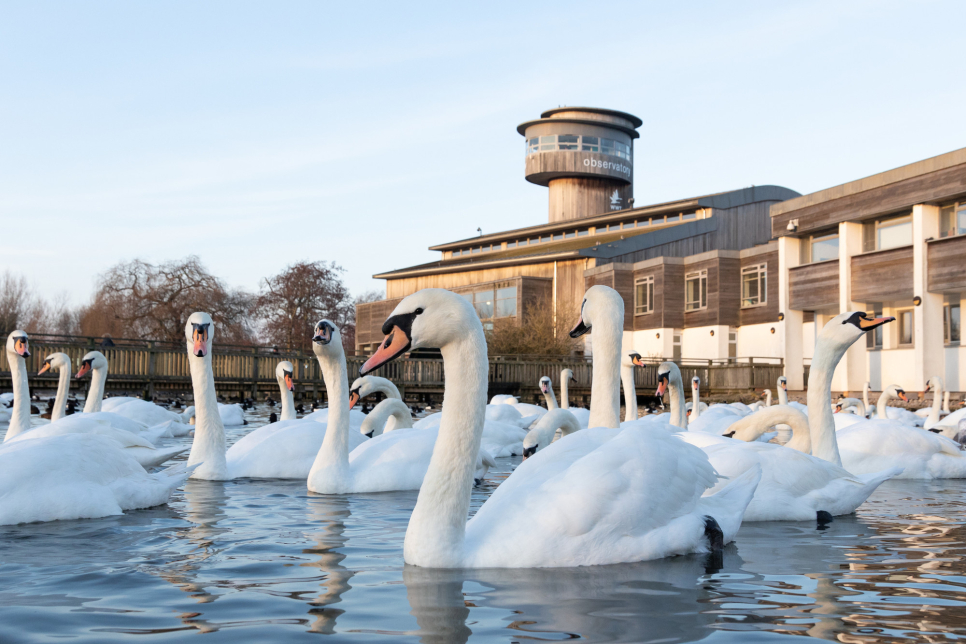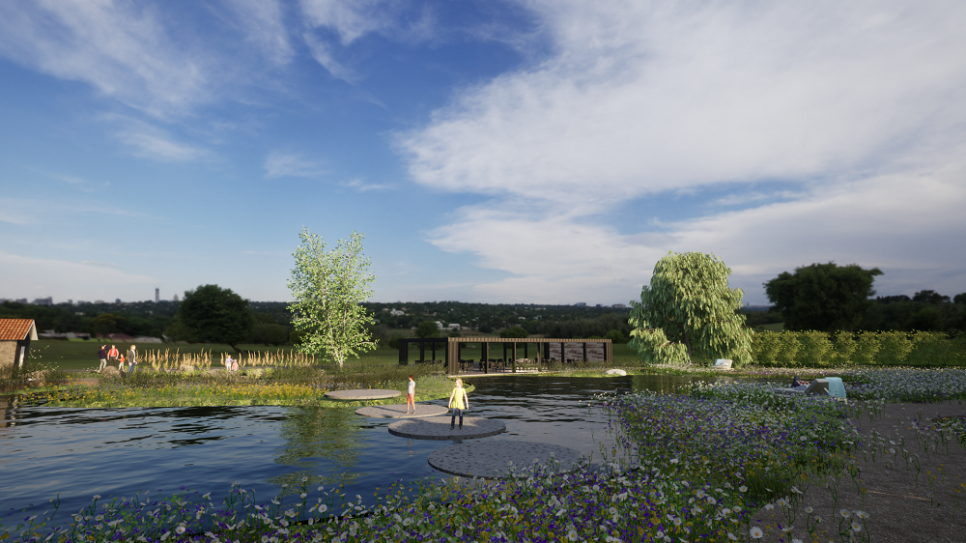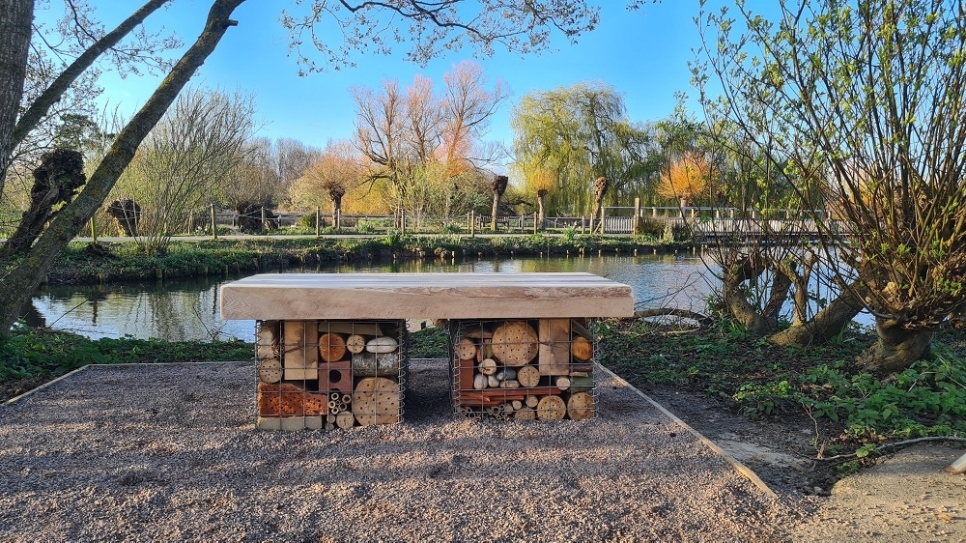Flamingo Lagoon offers eggstra special views of nesting birds
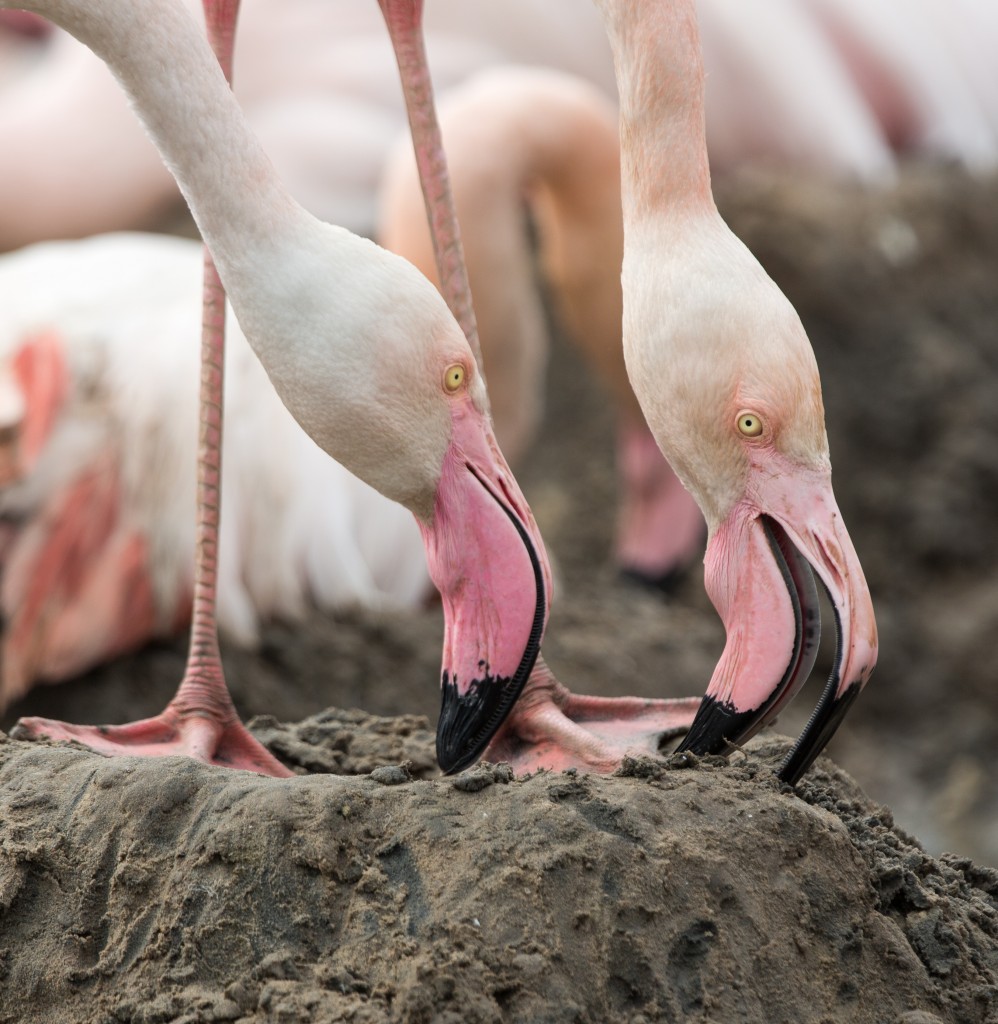
WWT Slimbridge’s flock of Greater flamingos have laid 31 eggs on an island just metres away from a new viewing gallery.
It is the first time they have laid so close to the public and more are expected to arrive over the coming days.
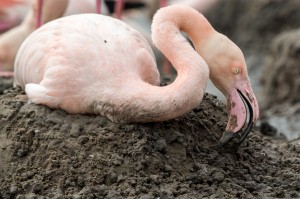
To keep the precious eggs safe they have been removed by staff and replaced with dummy eggs, which the doting birds are caring for. The real eggs will be returned to the correct parents at the point of hatching towards the end of May.
Removing the eggs allows them to be artificially incubated ensuring a much greater chance of survival.
The stunning attraction Flamingo Lagoon was created in 2012, during the work the flamingo house was upgraded, the environment enhanced and a new nesting island was built.
At the same time a sunken observatory was created close to the island giving visitors an unusual view through the legs of the tall birds.
Last year, as expected, the Greater flamingos didn’t lay eggs as the flock became used to their new environment.
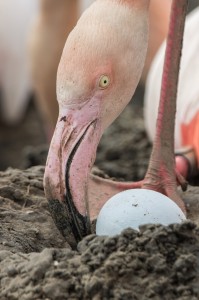
Mark Roberts, aviculture manager at WWT Slimbridge, said: “Flamingo Lagoon is already proving a great success as this healthy number of eggs shows. The birds love the new island and the public can see incredible views of these fascinating birds up close.
“We knew they wouldn’t lay any eggs last year, rearing chicks is a tiring process for the whole flock so it can actually do them good to have a year off.
“We are pleased to see though that now they are settled they clearly approve of the new environment.
“Over the next few weeks visitors will be able to see their courtship displays such as head flagging, them sitting on nests and caring for the eggs and continuing to build the nests higher and higher.
“Flamingos make great parents and we are excited about returning the eggs to them at the point of hatching so they can rear their own chicks.
“Having the youngsters among the flock will also be exciting and will be a real attraction for visitors throughout the summer months.”
Flamingos are attentive parents and feed their young a crop milk through a special gland. In their flamingo ‘milk’ some of their distinctive pink colouring is released which temporarily causes the parents to fade in colour.
Although things are looking promising, not all the eggs collected will be fertile, so it is now a waiting game to see how many chicks the flock of 245 flamingos will successfully rear.
With its large flocks and rearing expertise WWT Slimbridge in Gloucestershire is the focus of much flamingo research.
Four of the world’s six flamingo species are classed as ‘Vulnerable’ or ‘Near Threatened’ by the International Union for Conservation of Nature (IUCN). It’s thought there are less than 30 breeding sites left in the whole world.
Visitors can see all six species of flamingo at WWT Slimbridge Wetland Centre.
